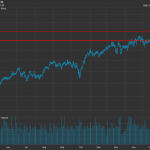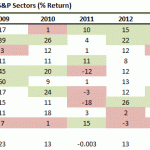More losses ahead for biotech

Pedro Castellano | Getty Images
Investors are bailing on biotech stocks at such a rapid pace that it is shocking even some of the most-seasoned traders. It’s a popping bubble that could have implications on the sustainability of this six-year bull market.
Consider this, the most popular ETF in the sector—the Nasdaq Biotechnology iShares (IBB)—hit an all-time intraday high Friday of $374.62. In just three trading days, it’s down 9 percent. The ETF is up almost 500 percent since the market bottom in 2009, versus a gain of 200 percent for the S&P 500.
What’s the next move? CNBC Pro dissects the technical analysis, the fundamental outlook and any drug catalysts on the horizon in order to determine what’s coming for the sector.
The “biotech rollover is scaring some” traders, said John Spallanzani, chief macro strategist at GFI Group. He warned clients on Wednesday morning to get out of biotech before the selling intensified. The trader is now pointing clients to the textbook resistance in the Nasdaq Biotechnology ETF at the $340 level or about $2 below current levels. If it breaks that support, bigger declines to $320, or 6 percent from here, could be in the cards, technical analysts said.
Nasdaq Biotechnology ETF, 1 year
Source: FactSet
A chart pattern on Friday telegraphed the decline this week for J.C. Parets of Eagle Bay Capital. The ETF traded up forcefully to a new high in the first part of the session, only to close near the low of the day. This kind of action forms a bearish reversal bar chart, something analysts like Parets comb charts for to identify short candidates.
“I shorted biotechs aggressively on Friday after that key reversal day,” Parets said Tuesday before things got really ugly. “When it gaps up at new highs and the media gets euphoric about it, then fades all day … that’s your entry. We went out at lows Friday and again today. I think this still goes lower. Maybe another 20 points on XBI, at least,” he said, referring to the SPDR S&P Biotech ETF.
If recent history is any guide, this selloff has further to go. The ticker IBB actually had a 12 percent pullback from September to October. Earlier in 2014, it dropped 23 percent from February to April.
Read MoreTime to bet big against Nasdaq?
So the charts are ugly, but what do the fundamentals show?
Part of the problem is trying to value a sector whose members don’t earn money until much later in their life cycle as a public company. The bulls will argue that the companies, while risky, eventually deliver on the speculation the group attracts. The bears will say this lack of earnings makes the sector prone to bubbles as there’s no way to measure the sector’s relative value—good or bad.
Just how bad does it look on an earnings basis? Bespoke Investment Group points out that the Nasdaq Biotechnology Index – the basis for the ETF mentioned above—is trading at more than 500 times trailing earnings. More than half of the stocks in the index will lose money in 2015, Bespoke said.
But Bespoke also points out that the sector has never traded on the price-to-earnings ratio.
One group that is still firmly in biotech’s camp is Wall Street. CNBC Pro looked at the consensus 12-month price target from analysts for each member of the iShares Nasdaq Biotech fund. Even after the big gains by the group, the median increase predicted for a member of the ETF is a whopping 33 percent. Two-thirds of the ETF components are expected to rise by at least 20 percent in the next 12 months, should they hit those estimates compiled by FactSet.
But these forecasts will likely come way down following this week’s drop.
The reason why this biotech selloff may have bigger implications for the bull market is because the rally is running out of leaders. Every sector has had its turn.
In 2009, it was technology stocks that led the market. The annual sector leaders for each of the next five years were then consumer discretionary, utilities, financials, consumer discretionary (but with industrials a close second) and then health care last year.
Health care has continued that outperformance in the last three months, mostly because of the gains in biotech stocks. That’s not a great omen for the bull.
According to data compiled by Birinyi Associates, the sectors that typically led the final three months of bull markets going back to 1970 were health care and technology.
The money play:
Investors are playing this through the purchase of put options on the Nasdaq Biotechnology ETF. If one wants to get more aggressive, Eric Mustin of WallachBeth points out an ETF that bets against the sector and how its gaining popularity.
“On top of the big Biotech ETF volumes, the short biotech trade has gained steam among speculators and shorter-term retail as indicated by the jump in shares outstanding of BIS (ProShares UltraShort Nasdaq Biotech), which added a 20 percent increase in shares outstanding and has been trading three to five times average daily volume the past few days,” Mustin said.
To be sure, if biotech is losing all the hot money now, there is a sector catalyst on the horizon that could stem the selling by attracting investors that study the sector. The American Society of Clinical Oncology (ASCO) annual conference is ahead at the end of May. Biotech stocks typically rise heading into the meeting and afterward as developments in cancer treatments unveiled there lift many individual stocks.
But two months is a long time for a sector dropping this much in just three days.
—CNBC’s Giovanny Moreano contributed to this story.
See original article here:



